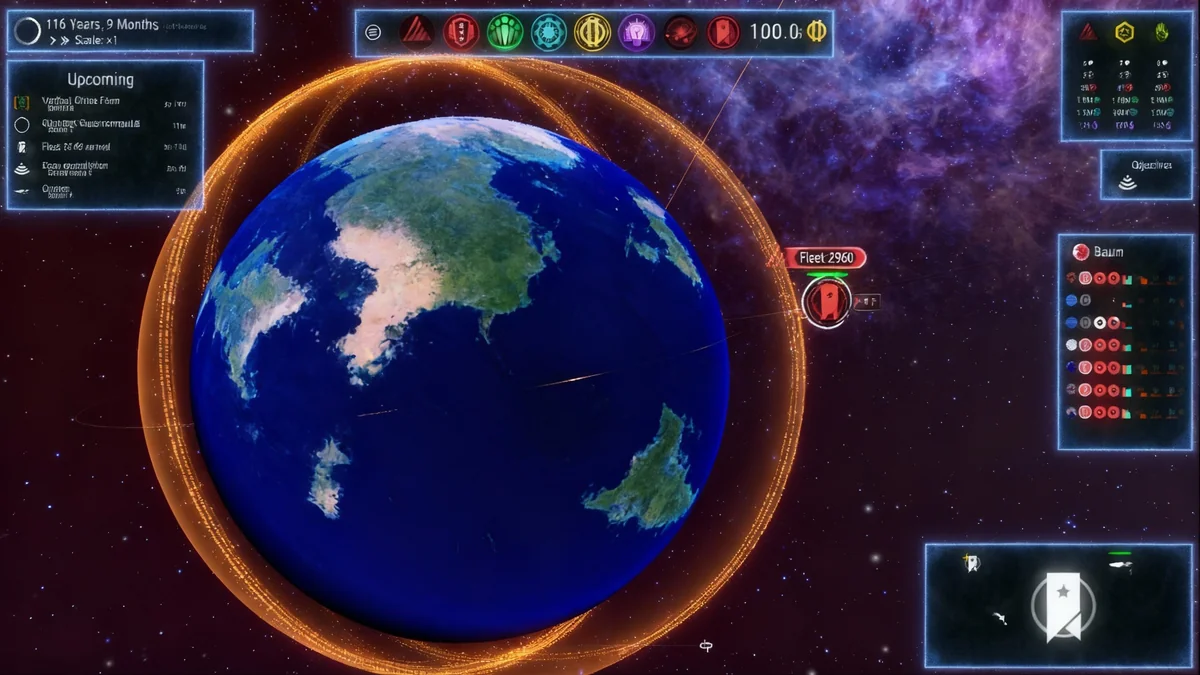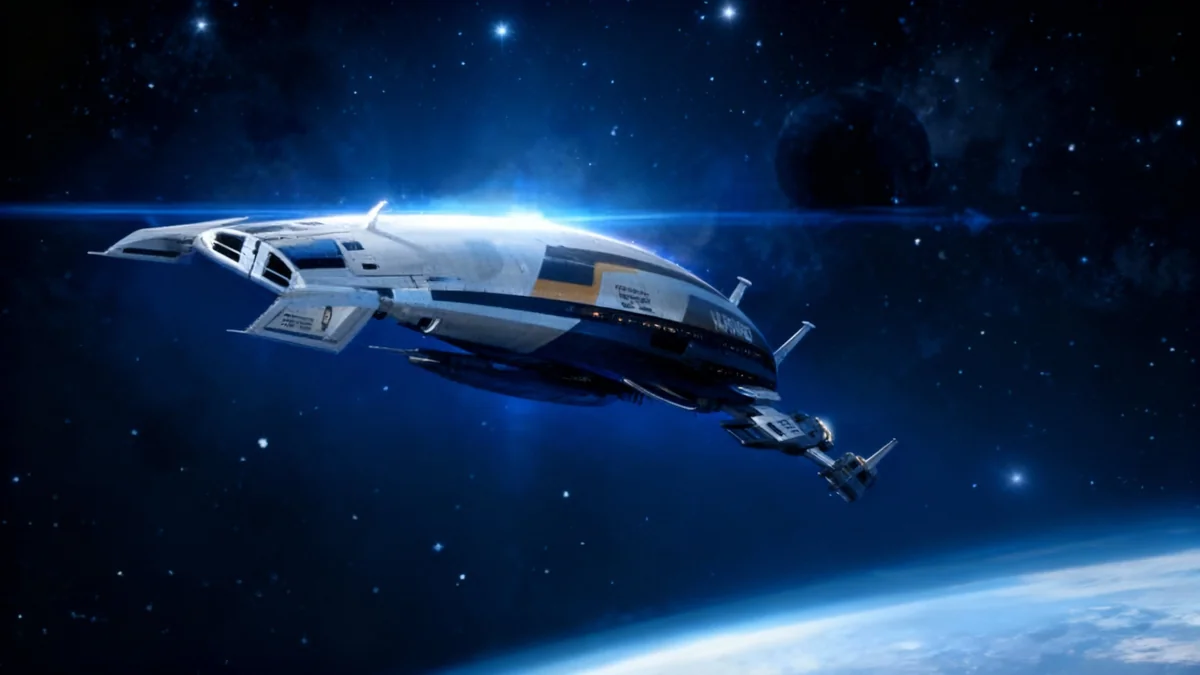After more than a decade of solo development, former Creative Assembly developer James Miller has released Stellar Reach, a space strategy game that prioritizes scientific realism. The game, which was in development for 11 years, aims to provide a more grounded experience within the 4X genre, simulating a to-scale stellar neighborhood where planetary orbits directly impact gameplay.
Key Takeaways
- Stellar Reach, a new 4X space strategy game, is the result of 11 years of work by a single developer.
- The game emphasizes realism, featuring planetary orbits and a universe built to scale, challenging typical genre conventions.
- It introduces a unique political system where humans act as leaders providing passive benefits, while automation handles labor and combat.
- Development faced significant technical hurdles, including building a custom game engine and a complex AI system from scratch.
An 11-Year Journey to the Stars
For developer James Miller, Stellar Reach represents a long-held ambition to create a space strategy game grounded in realistic fiction. Miller, whose previous work includes titles like Halo Wars 2 at Creative Assembly, spent over a decade bringing this vision to life. The project was a solo endeavor, requiring him to take on every role from game design and art direction to community management.
"I've always been someone who really gets into more grounded and realistic fiction," Miller explained. This philosophy became the foundation of the game's design. The long development cycle allowed for deep exploration of complex ideas, though not all of them made it into the final product. An initial concept to have stars move over centuries was eventually dropped to avoid overcomplicating the visual design.
Realism at the Core of Gameplay
Stellar Reach sets itself apart from other titles in the genre, such as Stellaris, by forgoing common mechanics like fixed hyperspace lanes. Instead, players have the freedom to send fleets to any star system from the outset. "The greater freedom opens up more directions of opportunities, and with it more directions of incoming risk," Miller noted.
The game's most significant feature is its adherence to astrophysical principles. Planets follow realistic orbital paths around their stars. This means that when a player sends a ship to another world, the game calculates a rendezvous point along that planet's orbit. While the tactical impact is subtle, it adds a layer of strategic depth and reinforces the game's sense of scale.
A Universe of Numbers
Simulating a to-scale universe, from ships measured in meters to distances spanning lightyears, created immense technical challenges. According to Miller, the process pushed the limits of modern 64-bit computing, as the vast range of numbers required for the simulation was difficult to manage within a custom-built game engine.
This commitment to scale means voyages and even skirmishes can last for decades in game time, giving players a true sense of the vastness of space. The dynamic nature of solar systems means players must manage their empire across a constantly moving cosmic landscape.
A Different Vision for Humanity's Future
The game also presents a unique take on humanity's role in a futuristic society. Miller questioned the common sci-fi trope of humans performing manual labor and fighting wars when automation is a likely reality.
"The reality, for better or worse, is that machines will just be better at this kind of thing in the not-that-distant future," he said. "So, there was an opportunity in Stellar Reach to have this be done entirely by automation, robots, and AI."
In Stellar Reach, humans have ascended to purely political roles. They serve as leaders who provide passive buffs to planets, star systems, and the entire faction. This system is divided into three tiers:
- Councillors: Provide benefits to their specific planets.
- Delegates: Buff entire star systems.
- Senators: Affect the entire player faction.
This design shifts the focus of population management from resource gathering to strategic political appointments, adding a unique layer to the game's management side. Combat is also streamlined, with battles resolved based on fleet statistics once they are committed, resembling a holographic display of stat-versus-stat conflict.
The Challenges of Building a Universe
Creating Stellar Reach was not without its difficulties. Miller described the process of designing the game's AI as one of the most stressful aspects of the project. "I did it the hard way," he recalled, explaining the complexity of programming AI to manage colonization, defense, and reconnaissance missions across a vast, dynamic map.
From Scratch Engine to Player Feedback
The decision to build a proprietary game engine, made early in development, led to significant challenges upon release. A public demo revealed compatibility issues across a wide range of hardware and software configurations. Miller described the feedback as "bruising" but necessary, forcing him to work meticulously to resolve the technical problems for players.
Despite the hurdles, Miller expressed satisfaction with the project, which served as his first foray into nearly every aspect of game development. "I've thoroughly enjoyed taking these on," he stated.
Stellar Reach is now available on Steam, offering a distinct and thoughtful experience for strategy fans who appreciate a more scientific approach to galactic conquest. A demo remains available for players interested in trying the game before purchasing.





